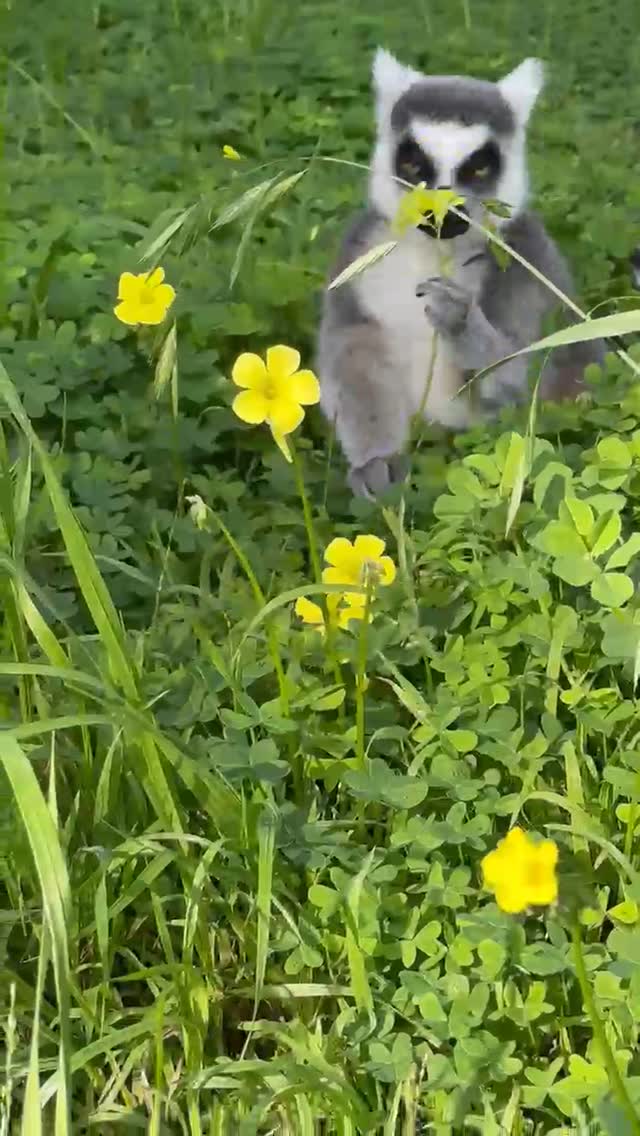- Understanding the ecological richness of the Lipman Family Lemur Forest through its post-December lushness.
- The importance of plant diversity and growth for lemur habitats and nutrition.
- Conservation strategies and management practices for maintaining healthy ecosystems in zoo environments.
- The role of immersive wildlife exhibits in educating the public and promoting conservation efforts.
- Collaboration between zoos, researchers, and local communities to enhance wildlife preservation efforts.
After the December rains, the Lipman Family Lemur Forest becomes a vibrant oasis of life and color. This microcosm within the zoo is not just a display piece; it is a living, breathing environment that emulates the wild habitats of lemurs. The sudden burst of flora growth, particularly the tall grass and the blooming flowers, plays an essential role. It isn’t just for visual appeal. This transformation signifies a thriving ecosystem that supports the dietary and behavioral needs of its inhabitants—the lemurs.
The grass turning lush and the flowers blooming are directly tied to the local weather patterns seen after heavy rains. These natural cycles are mimicked in zoo environments to create a more authentic habitat. Here, the vegetation not only provides food but also serves as enrichment, allowing lemurs to engage in natural foraging and nesting behaviors. These activities are crucial for their mental and physical health, reinforcing the importance of ecological fidelity in exhibit designs.
Plant diversity is foundational for lemur health. Different plant species offer varied nutritional benefits, catering to the dietary needs of different lemur species. For instance, some lemurs rely heavily on leaves and fruits, while others may prefer seeds or flowers. By maintaining a diverse array of plants within the Lemur Forest, zoo management ensures that each species has access to the specific nutrients it requires. This practice is vital for conservation, as it helps mimic the animals’ natural diets more closely and promotes healthier and longer-lived populations.
Zoo management practices place a high premium on recreating sustainable habitats. Careful planning and ongoing monitoring of these environments are necessary to sustain the balance between flora and fauna. This involves understanding the plant life cycles and their impact on animal health, coupled with effective water and soil management. In fact, these practices create such robust ecosystems that they become miniature models for understanding broader conservation challenges that exist in the wild.
Educating the public through immersive wildlife exhibits is another pillar in conservation efforts. Transformation like that seen in the Lipman Family Lemur Forest becomes an educational tool. Visitors can witness firsthand the interconnectedness between rain patterns and the life cycles of plants and animals. This kind of learning experience goes beyond simple displays and texts. It offers tangible examples that resonate more deeply with visitors of all ages, encouraging them to appreciate and support conservation initiatives.
Furthermore, these exhibits serve as a platform to discuss critical issues such as habitat destruction and climate change. By experiencing environments that are sensitive to these factors, visitors gain a greater understanding of the fragility of natural habitats. This can engender stronger support for conservation policies and personal behavior changes that benefit wildlife protection.
Collaboration is vital in the landscape of zoo management and wildlife conservation. Partnerships with researchers and local communities offer enrichment to the Lipman Family Lemur Forest. By sharing knowledge and techniques, zoos can benefit from scientific advances and local ecological expertise. This collaborative approach ensures that conservation efforts are not isolated but are part of a larger global strategy to protect endangered species.
In conclusion, the flourishing state of the Lipman Family Lemur Forest post-December rains is more than a temporary spectacle. It is a testament to the intricate and dynamic relationship between flora and fauna, underscoring the importance of detailed environmental management in zoos. The interplay of ecosystem components within this setting highlights the complexity and beauty of nature, inspiring efforts to preserve it in all its forms. Providing a realistic, thriving habitat for lemurs doesn’t just serve educational and aesthetic purposes; it forms the backbone of sustainable conservation practices that can one day translate back to the wild environments these species call home.
*****
Source Description
After our December rains, the grass in the Lipman Family Lemur Forest is lush and tall with tasty flowers all around!


